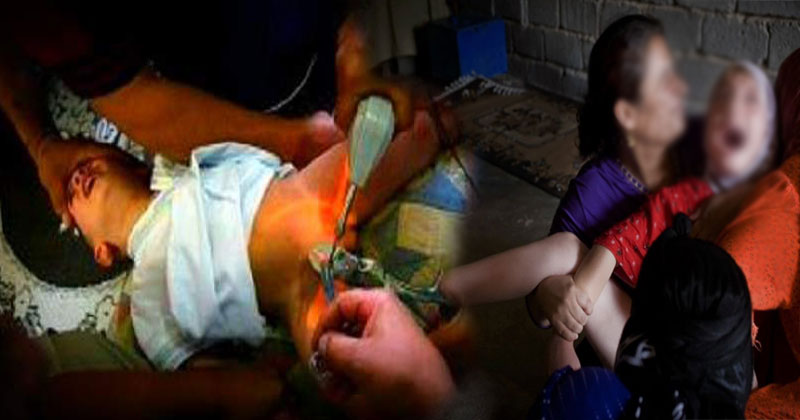
Clitoral Mutilation: Female genital mutilation (FGM), also known as female genital cutting and female circumcision is the ritual cutting or removal of some or all of the external female genitalia. The practice is found in Africa, Asia and the Middle East, and within communities from countries in which FGM is common.
Typically carried out by a traditional circumciser using a blade, FGM is conducted from days after birth to puberty and beyond. In half the countries for which national figures are available, most girls are cut before the age of five. Procedures differ according to the country or ethnic group. They include removal of the clitoral hood and clitoral glans; removal of the inner labia; and removal of the inner and outer labia and closure of the vulva. In this last procedure, known as infibulation, a small hole is left for the passage of urine and menstrual fluid; the vagina is opened for intercourse and opened further for childbirth.
This is done to prevent any possible sexual indulgence by a girl as the virgin’s seal is broken only on the night of consummation by the husband.
It is usually initiated and carried out by women, who see it as a source of honour, and who fear that failing to have their daughters and granddaughters cut will expose the girls to social exclusion. Health effects depend on the procedure. They can include recurrent infections, difficulty urinating and passing menstrual flow, chronic pain, the development of cysts, an inability to get pregnant, complications during childbirth, and fatal bleeding. There are no known health benefits.
FGM has been closely associated with the control of female sexuality. According to the World Health Organisation, in different cultures, some believe the procedure curbs women’s sexual urges, and thereby increases the likelihood of them remaining virgins until they are married.
FGM is practised within both Muslim and Christian communities, as well as by followers of some indigenous religions. Although neither Islam nor Christianity endorse it, religious doctrine is often used to justify it.
Approximately 6,000 girls are subjected to FGM every day, with nearly a quarter of them under the age of 14 when it takes place.
FGM has been banned by most African countries affected by the practice as well as many other European and Western nations.
Penalties range from a minimum of six months to a maximum of life in prison. Several countries also include monetary fines in the penalty.
However these laws are not always enforced and FGM continues in many places, affecting the lives of millions of women and girls.
Also Read India’s First Plus Size Model Bishamber Das – See Pics

Post Your Comments